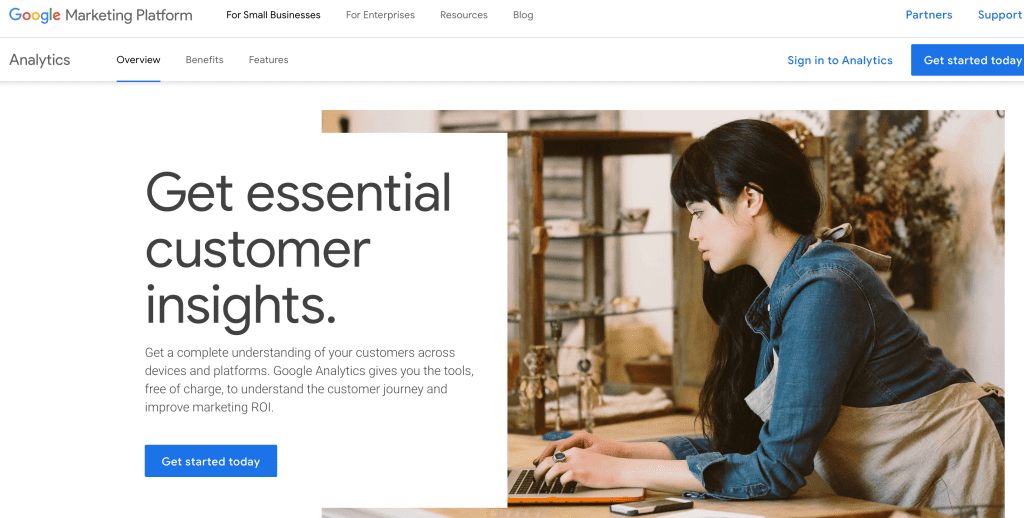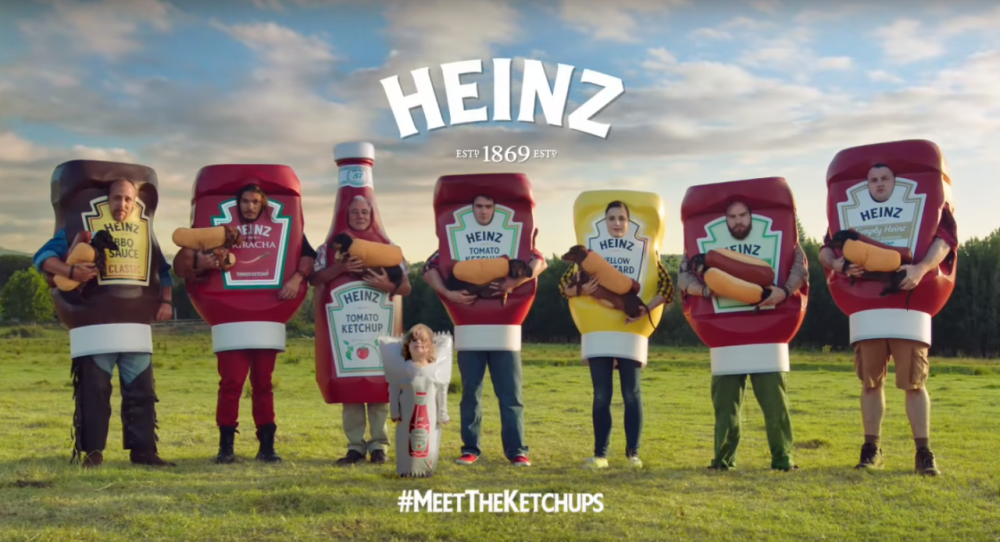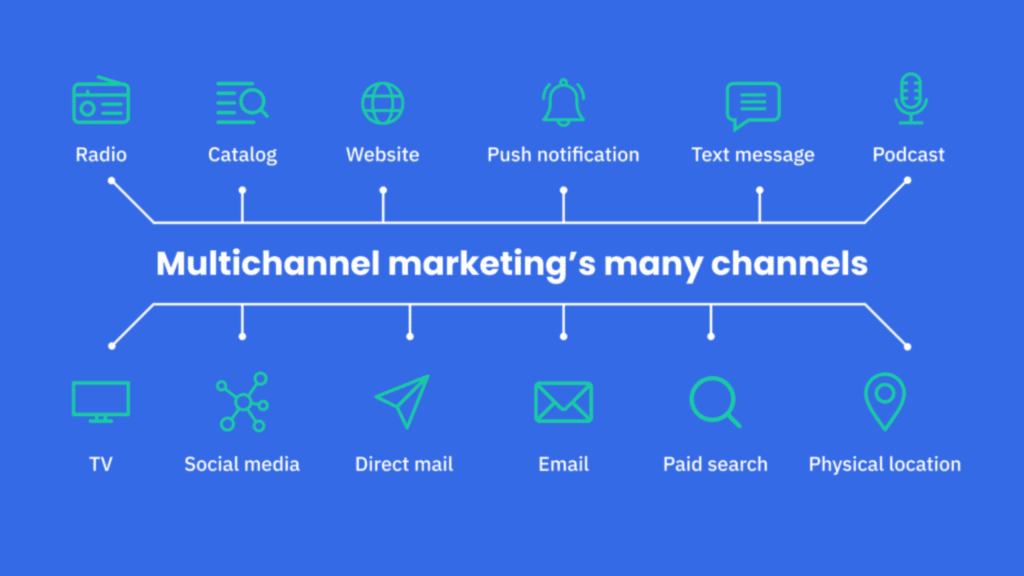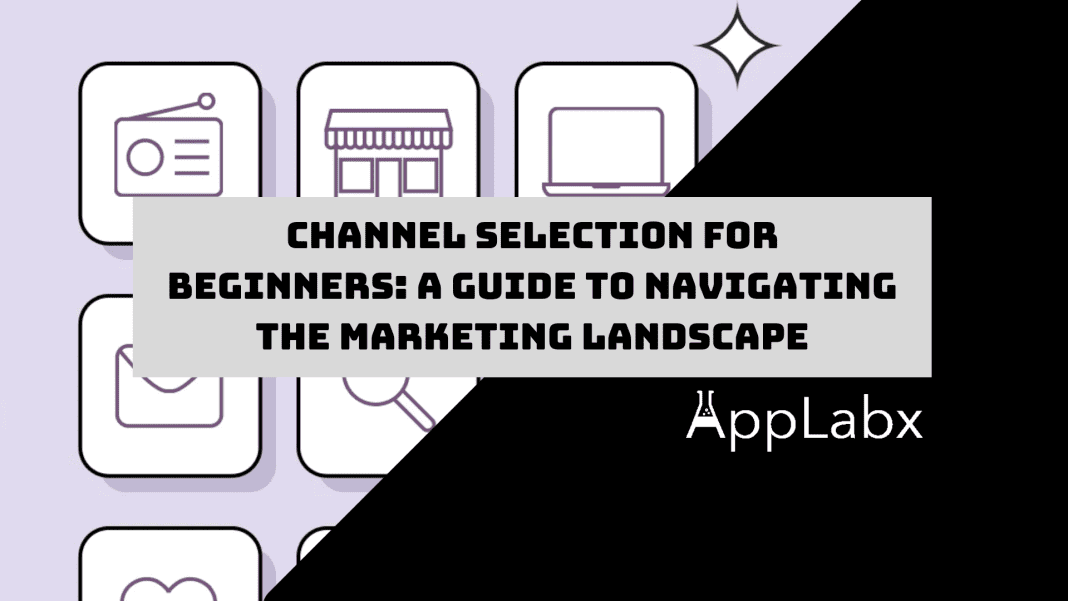Key takeaways
- Strategic Foundations: Master the art of channel selection to build a strategic foundation for marketing success as a beginner.
- Data-Driven Navigation: Harness the power of data-driven decision-making to navigate the dynamic marketing landscape with precision.
- Continuous Learning: Embrace continuous learning through educational resources and stay ahead by adapting to emerging trends in marketing channels.
In the dynamic realm of modern marketing, navigating the vast landscape of available channels can be a daunting task, especially for beginners venturing into the intricacies of promotional strategies.
Welcome to “Channel Selection for Beginners: A Guide to Navigating the Marketing Landscape,” where we unravel the complexities of choosing the right avenues to broadcast your brand message and connect with your target audience.
Why Channel Selection Matters:
The success of any marketing campaign hinges significantly on the channels chosen to disseminate your message.
In a world inundated with options, from traditional mediums like print and television to the ever-expanding digital domain encompassing social media, search engines, and email, the stakes are higher than ever.
For those just embarking on their marketing journey, the plethora of choices can be overwhelming, making it imperative to understand the nuances of each channel and how they align with your brand and audience.

Challenges Faced by Beginners:
As we delve into this guide, it’s crucial to acknowledge the challenges of marketing neophytes.
The marketing landscape is not a one-size-fits-all terrain, and deciphering the preferences and behaviors of your target audience is a puzzle in itself.
This guide aims to demystify the process, offering practical insights and strategies to empower beginners to make informed decisions that resonate with their unique business objectives.
Embarking on a Journey of Understanding:
Before delving into the myriad marketing channels, we set the foundation by emphasizing the importance of understanding your audience. Market research becomes your compass, guiding you through the intricacies of consumer demographics and behaviors.
We explore the creation of buyer personas, invaluable tools that enable beginners to tailor their marketing efforts to the specific needs and preferences of their ideal customers.
The Diverse Landscape of Marketing Channels:
Our exploration takes us through both traditional and digital realms of marketing channels.
From the enduring influence of print media and television advertising to the dynamic and ever-evolving platforms of social media, search engines, and email, we dissect the strengths and weaknesses of each.
This comprehensive overview equips beginners with a holistic understanding of available options, allowing for informed decision-making based on their unique business characteristics.
Embark on this journey with us as we unravel the intricacies of evaluating channel effectiveness, budget considerations, and integration of strategies across multiple channels.
Empowering Beginners with Practical Insights:
Understanding that budget constraints are a common concern for beginners, we provide a detailed examination of budget allocation based on channel effectiveness.
A cost-benefit analysis further aids in optimizing resources for maximum impact. Additionally, we explore the integration of channels to develop a cohesive marketing plan, leveraging cross-channel synergy for enhanced results.
Tools, Resources, and Common Pitfalls:
Arming beginners with the right tools is paramount to their success. We highlight marketing automation platforms and analytics tools that streamline processes and provide valuable data for campaign optimization.
Looking Toward the Future:
As we near the conclusion of this extensive guide, we cast our gaze toward the future of marketing channels. Emerging technologies and platforms are transforming the landscape, and we discuss adaptation strategies for staying ahead in this ever-evolving terrain.
The guide concludes with a recap of key points and a call to embrace continuous learning and adaptation in dynamic marketing.
Before we venture further, we like to share who we are and our digital experiences.
About AppLabx
From developing a solid marketing plan to creating compelling content, optimizing for search engines, leveraging social media, and utilizing paid advertising, AppLabx offers a comprehensive suite of digital marketing services designed to drive growth and profitability for your business.
AppLabx is well known for helping companies and startups leverage effective marketing channels to drive web traffic to their websites and web apps.
At AppLabx, we understand that no two businesses are alike. That’s why we take a personalized approach to every project, working closely with our clients to understand their unique needs and goals, and developing customized strategies to help them achieve success.
If you need a digital consultation, then send in an inquiry here.
Channel Selection for Beginners: A Guide to Navigating the Marketing Landscape
- Understanding Your Audience
- Overview of Marketing Channels
- Evaluating Channel Effectiveness
- Budget Considerations
- Channel Integration Strategies
- Tools and Resources for Beginners
- Future Trends in Marketing Channels
1. Understanding Your Audience
In the labyrinth of marketing, success hinges on the ability to decipher and resonate with the intricacies of your audience.
This section unveils the paramount importance of understanding your audience and how market research coupled with the creation of buyer personas serves as the compass in navigating the marketing landscape.
The Significance of Market Research
- Demographic Profiling:
Conducting thorough market research involves delving into demographic data to unveil essential insights.
According to a report, social media usage has typically skewed toward the younger demographic, with 84% of those aged 18 to 29 and 81% of people between 30 to 49 actively using at least one social media site. But this active usage trend continues in the older demographics as well, with 73% in the 50 to 64 range and a somewhat surprising 45% of those in the 65-plus group.
Utilize platforms like Pew Research Center and Statista for in-depth demographic data. - Behavioural Analysis:
Uncovering the behavioural patterns of your audience is pivotal. For instance, Google Analytics provides an array of data, including bounce rates, page views, and user journey insights, aiding in analyzing user behavior on your digital platforms.

Crafting Effective Buyer Personas
- Defining Buyer Personas:
- Buyer personas are semi-fictional representations of your ideal customers. Utilize data from market research to create detailed personas about demographics, behaviours, motivations, and challenges.
- Example: If targeting the Gen Z demographic, you can consider their preference for authenticity and social responsibility.
- Utilizing Empathy Maps:
- Empathy maps enhance the understanding of your audience’s needs and pain points. These visual representations delve into what your audience thinks, feels, hears, and says, fostering a deeper connection.
- Example: Airbnb employed empathy maps to understand user experiences, leading to innovative solutions that resonated with their diverse audience.
- Feedback Loops and Continuous Refinement:
- Establish feedback mechanisms to continually refine your buyer personas. Regularly solicit feedback through surveys, customer interviews, and social media interactions.
- Example: HubSpot’s “Feedback” tool allows users to seamlessly collect and manage customer feedback, contributing to the refinement of buyer personas.
2. Overview of Marketing Channels
In the digital age, marketers are faced with a plethora of marketing channels, each with its unique strengths and characteristics.
This section provides a comprehensive overview of both traditional and digital marketing channels, delving into their dynamics, relevance, and real-world examples.
Traditional Marketing Channels
- Print Media:
- Despite the digital surge, print media remains a resilient marketing channel. Ad spending in the Print Advertising market was projected to reach US$48.59 billion in 2023.
- Example: Magazines like Vogue continue to attract luxury brands, capitalizing on the tactile and visual appeal of print.
- Television and Radio Advertising:
- Television advertising remains a dominant force.
- Example: Super Bowl ads exemplify the impact of television advertising, with companies investing millions for a brief yet impactful slot.

Digital Marketing Channels
- Social Media Platforms:
- There were an estimated 4.89 billion social media users worldwide in 2023.
- Example: Nike’s strategic use of Instagram, leveraging influencer partnerships and visually appealing content, has contributed to its global brand presence.
- Search Engine Marketing (SEM):
- Search engines drive a significant portion of online traffic. Google alone processes over 3.5 billion searches per day.
- Example: The success of Airbnb’s SEM strategy is evident in its prominence in search results, driving user traffic to its platform.
- Email Marketing:
- Email marketing remains a powerful tool. The average ROI through email marketing is $36 for every $1 spent.
- Example: Amazon’s personalized and targeted email campaigns contribute to its customer retention and engagement strategy.
The Interplay of Channels in Multichannel Marketing
- The synergy between Traditional and Digital:
- Effective marketing often involves a blend of traditional and digital channels. Combining advertising across digital and TV delivered big dividends; a brand lift study showed a 33% lift in ad recall and a 24% lift in brand awareness.
- Example: Coca-Cola’s “Share a Coke” campaign seamlessly integrated TV commercials with social media engagement, creating a cross-channel phenomenon.
- Multichannel Strategies:
- Businesses increasingly adopt multichannel strategies to meet consumers where they are. In a survey, 87% of customers think brands need to put more effort into providing a consistent experience across channels.
- Example: Apple’s product launches synchronize across various channels, including social media teasers, live events, and website updates, creating a cohesive brand narrative.

Metrics and Analytics for Channel Performance
- Key Performance Indicators (KPIs):
- Measuring marketing channel effectiveness relies on KPIs such as conversion rates, click-through rates, and customer acquisition costs.
- Example: Google Analytics provides comprehensive KPI tracking, enabling businesses to assess the performance of their online channels.
- Attribution Models:
- Understanding the customer journey requires robust attribution models. For example, a multi-touch attribution model can be effective in many marketing campaigns.
- Example: HubSpot’s attribution reporting allows marketers to analyze how different channels contribute to conversions, aiding in strategic decision-making.
3. Evaluating Channel Effectiveness
In ever-evolving marketing, the ability to discern the efficacy of chosen channels is paramount.
This section delves into the intricacies of evaluating channel effectiveness, exploring key metrics, and industry insights to empower marketers with the tools needed for strategic decision-making.
Metrics and Analytics for Channel Evaluation
- Conversion Rates:
- Conversion rates are a fundamental metric for assessing how effectively a channel transforms leads into customers.
- Customer Acquisition Cost (CAC):
- CAC measures the cost of acquiring a new customer through a specific channel. CAC is a crucial metric for evaluating channel effectiveness.
- Example: Facebook’s advertising platform provides businesses with insights into their CAC, enabling them to refine targeting strategies for more cost-effective customer acquisition.
- Return on Investment (ROI):
- ROI quantifies the profitability of a marketing channel by comparing the gains against the costs.
- Example: Google Analytics assists businesses in calculating ROI by tracking user interactions, helping them understand which channels contribute most significantly to their bottom line.
Continuous Optimization Strategies
- A/B Testing:
- A/B testing involves comparing two versions of a webpage, email, or ad to determine which performs better. Dell reported a 300% increase in conversion rate from A/B testing, as cited by FinancesOnline.
- Example: Airbnb conducts extensive A/B testing on its website to refine user experience and optimize conversion rates.
- Customer Feedback Loops:
- Establishing feedback mechanisms allows businesses to glean insights directly from their audience. According to a survey, 84% of customers trust online reviews as much as personal recommendations.
- Example: Yelp’s review platform creates a continuous feedback loop, enabling businesses to adapt strategies based on customer sentiments and preferences.
Industry Insights and Future Trends
- AI-Powered Analytics:
- The integration of artificial intelligence in analytics tools is a rising trend. Artificial intelligence in the marketing market is exploring growth opportunities worth 40.09 billion USD by 2025.
- AI-driven analytics offer predictive capabilities, enabling marketers to proactively optimize channels based on anticipated trends.

- Voice Search Optimization:
- With the increasing prevalence of voice-activated devices, optimizing for voice search is becoming imperative. In 2024, the number of active voice assistant devices worldwide will double, reaching a total of 8.4 billion units.
- Adapting channels for voice search aligns with changing consumer behaviors and enhances overall accessibility.
4. Budget Considerations
In the dynamic landscape of marketing, effective allocation of budget is a critical factor that can determine the success or setback of a campaign.
This section unravels the intricacies of budget considerations, exploring key factors, industry benchmarks, and real-world examples to guide marketers in making strategic financial decisions.
Allocating Budget Based on Channel Effectiveness
- Prioritizing High-Impact Channels:
- Understanding the effectiveness of each marketing channel is paramount. Allocate a larger portion of the budget to channels that have proven to yield higher conversion rates and return on investment (ROI).
- Example: In terms of ROI, email marketing tends to have a significantly higher return than other channels.
- Continuous Evaluation and Adjustment:
- Regularly reassess the performance of marketing channels and be prepared to adjust budget allocations accordingly. Tools like Google Analytics and marketing automation platforms can provide real-time insights.
- Example: Airbnb continuously evaluates the performance of its paid advertising channels, shifting the budget to those that generate the highest user engagement and bookings.
Cost-Benefit Analysis for Each Marketing Channel
- Understanding Customer Acquisition Costs (CAC):
- Calculate the CAC for each marketing channel to gauge the efficiency of acquiring new customers. This involves dividing the total cost of marketing by the number of customers acquired.
- Lifetime Value (LTV) Considerations:
- Evaluate the lifetime value of customers acquired through different channels. Channels that contribute to higher LTV often justify a higher initial acquisition cost.
- Real-world example: Amazon Prime’s subscription model not only covers the cost of customer acquisition through various marketing channels but also ensures a continuous revenue stream through increased customer loyalty and repeat business.
Budget Constraints and Strategic Prioritization
- Aligning Budget with Business Goals:
- Ensure that marketing budget allocations align with broader business goals. If brand awareness is a priority, budget allocation may favor channels like social media and influencer marketing.
- Example: Nike’s strategic alignment of the marketing budget with its goal of promoting social responsibility is evident in campaigns that highlight sustainable practices and community impact.
- Testing and Iteration within Constraints:
- Embrace a testing mindset to identify cost-effective channels. Start with smaller budgets, conduct A/B tests, and gradually scale investments in channels that demonstrate success.
- Example: Dollar Shave Club’s initial success was achieved through a viral video that garnered attention on a limited budget, showcasing the power of creative content within constraints.
Adapting to Emerging Trends
- Investing in Future-Proof Channels:
- Allocate a portion of the budget to explore emerging trends and technologies. Early investment in channels like voice search optimization and augmented reality can provide a competitive edge.
- Example: Companies like Sephora have embraced augmented reality for virtual try-on experiences, enhancing the online shopping journey and staying ahead in the beauty industry.
- Agile Budgeting for Dynamic Environments:
- Embrace agile budgeting methodologies to adapt quickly to changing market dynamics. This involves setting aside a flexible portion of the budget for experimentation and rapid adjustments.
- Example: Startups like Slack have employed agile budgeting to allocate resources dynamically based on the performance of various marketing initiatives, allowing for swift pivots.
5. Channel Integration Strategies
As the marketing landscape continues to evolve, the integration of multiple channels into a cohesive strategy becomes imperative for reaching and engaging diverse audiences.
This section explores channel integration strategies, delving into the benefits, challenges, and real-world examples that exemplify successful synergies.
Developing a Cohesive Multichannel Marketing Plan
- Understanding Multichannel Marketing:
- Multichannel marketing involves utilizing various channels to interact with customers.
- Example: Coca-Cola’s “Share a Coke” campaign seamlessly integrated TV commercials, social media, and personalized packaging, resulting in a cross-channel phenomenon.
- Mapping Customer Journeys:
- Map out customer journeys across different channels to understand touchpoints and preferences. Tools like customer journey mapping software aid in visualizing and optimizing these interactions.
- Example: Starbucks utilizes customer journey mapping to enhance the in-store and mobile app experience, creating a seamless transition between online and offline channels.
Leveraging Cross-Channel Synergy for Enhanced Results
- Consistent Branding Across Channels:
- Maintain consistent branding elements, messaging, and visuals across all channels to reinforce brand identity. This consistency contributes to a unified customer experience.
- Example: Apple’s product launches synchronize across various channels, including social media teasers, live events, and website updates, creating a cohesive brand narrative.
- Data Sharing for Personalization:
- Enable data sharing between channels to create personalized experiences. According to a study, 91% of consumers are more likely to shop with brands that provide relevant offers and recommendations.
- Example: Amazon’s recommendation engine utilizes data from various channels to provide personalized product suggestions, contributing to increased sales and customer satisfaction.
Challenges and Solutions in Multichannel Integration
- Overcoming Silos:
- Silos can hinder seamless integration. Implement communication channels and collaborative tools to break down silos between marketing, sales, and customer service teams.
- Example: Salesforce’s Customer 360 platform integrates customer data across departments, fostering collaboration and a holistic view of the customer journey.
- Adapting to Channel Preferences:
- Different channels cater to distinct audience preferences. Tailor content and messaging to suit the specific characteristics of each channel while maintaining a cohesive brand voice.
- Example: Netflix adapts its content for various channels, offering teaser trailers on social media, detailed descriptions on its app, and email newsletters for personalized recommendations, ensuring a tailored experience for users.
Future-Proofing Strategies in an Evolving Landscape
- Integration of Emerging Technologies:
- Embrace emerging technologies like artificial intelligence and augmented reality in channel integration. The global augmented reality (AR) market is projected to exceed $198 billion by 2025.
- Example: IKEA’s augmented reality app enables customers to visualize furniture in their homes before purchase, seamlessly integrating online and offline experiences.
- Cross-Platform Social Media Campaigns:
- Social media remains a dynamic channel for engagement. Create cross-platform campaigns that leverage the strengths of each social media channel, catering to diverse audience behaviors.
- Example: Nike’s “Just Do It” campaign utilizes a mix of Instagram’s visual storytelling, X’s real-time engagement, and YouTube’s video content to reach and resonate with a global audience.
6. Tools and Resources for Beginners
Embarking on a marketing journey as a beginner can be both exhilarating and overwhelming.
This section serves as a comprehensive guide, outlining essential tools and resources that empower beginners to navigate the marketing landscape effectively.
From analytics platforms to educational resources, we explore a plethora of options designed to foster growth and expertise.
Analytical Tools for Informed Decision-Making
- Google Analytics:
- A foundational tool for web analytics, Google Analytics provides insights into website traffic, user behavior, and conversion data.
- According to a web technology survey site, Google Analytics is used by 85.9% of websites whose traffic analysis tools are known to them — that’s 55.5% of all websites.
- HubSpot:
- HubSpot offers an integrated platform for marketing, sales, and customer service. Its analytics tools provide a holistic view of customer interactions and campaign performance.

Keyword Research Tools for SEO Optimization
- Google Keyword Planner:
- A free tool within Google Ads, the Keyword Planner helps identify relevant keywords for ad campaigns and SEO optimization.
- Ahrefs:
- A comprehensive SEO tool, Ahrefs assists in keyword research, backlink analysis, and competitor tracking.
- Ahrefs’ backlink index is one of the largest, with over 30 trillion links, providing valuable insights for SEO strategies.

Content Creation and Design Tools
- Canva:
- Canva is a user-friendly design tool that empowers beginners to create visually appealing graphics for social media, presentations, and marketing materials.
- Canva boasts over 60 million monthly active users, emphasizing its widespread adoption.
- Grammarly:
- A writing assistant tool, Grammarly helps users enhance their content by providing grammar and style suggestions.
- Every day, more than 30 million people and 70,000 teams around the world rely on Grammarly’s generative AI solutions and real-time writing suggestions.
Social Media Management Tools
- Hootsuite:
- Hootsuite streamlines social media management by allowing users to schedule posts, track performance, and engage with their audience across multiple platforms.
- Hootsuite serves over 18 million users globally, solidifying its position as a leading social media management tool.
- Buffer:
- Buffer simplifies social media scheduling and analytics, enabling users to plan and execute content strategies efficiently.
- Founded in 2010, Buffer now has over 75,000 customers in 175 countries.
Educational Resources for Continuous Learning
- Google Digital Garage:
- An online learning platform by Google, Digital Garage offers free courses covering various digital marketing topics, providing a solid foundation for beginners.
- HubSpot Academy:
- HubSpot Academy offers a range of free certification courses on inbound marketing, content marketing, and more, providing practical insights for beginners.
- Over 200,000+ professionals have advanced their careers with HubSpot Academy.

Marketing Automation Platforms for Efficiency
- Mailchimp:
- Mailchimp is a user-friendly marketing automation platform that facilitates email marketing, audience segmentation, and campaign tracking.
- Mailchimp sends billions of emails a month to millions of users.
- Constant Contact:
- Constant Contact is a marketing automation tool that caters to small businesses, offering email marketing, social media posting, and e-commerce features.
- Constant Contact supports more than 650,000 customers worldwide, emphasizing its widespread adoption among small businesses.
7. Future Trends in Marketing Channels
The marketing landscape is ever-evolving, driven by technological advancements, shifting consumer behaviors, and the constant quest for innovation.
This section explores the future trends shaping marketing channels, providing insights into the strategies and tools that are redefining how brands connect with their audiences.
Rise of Voice Search Optimization
- Voice Assistant Proliferation:
- With the widespread adoption of voice-activated devices like Amazon Echo and Google Home, voice search is becoming integral to the consumer experience.
- Optimizing for Conversational Queries:
- Brands are adapting their content to align with natural language queries, focusing on long-tail keywords and conversational phrases.
- Example: Domino’s Pizza implemented a voice-activated ordering system, enhancing customer convenience and staying ahead in the quick-service restaurant industry.
Video Content Dominance
- Short-Form Video Platforms:
- Short-form video platforms like TikTok and Instagram Reels are gaining prominence, offering brands a dynamic way to engage younger demographics.
- TikTok surpassed 1 billion monthly active users in 2021, underlining its rapid global growth.
- Live Streaming for Authentic Connection:
- Live streaming provides real-time interaction, fostering authenticity and immediate engagement with audiences.
- Example: Sephora utilizes Instagram Live for makeup tutorials, connecting with beauty enthusiasts in real time and enhancing brand trust.
Augmented Reality (AR) in Marketing
- Virtual Try-On Experiences:
- Brands are integrating AR for virtual try-on experiences, allowing consumers to visualize products before making purchase decisions.
- Example: Warby Parker’s Virtual Try-On tool enables customers to try on glasses, revolutionizing the eyewear shopping experience.
- Interactive Brand Engagement:
- AR is used to create interactive and immersive brand experiences, enhancing consumer engagement.
- Example: IKEA’s AR app lets users visualize furniture in their homes, blending the online and offline shopping experience seamlessly.
Emergence of Chatbots and Conversational Marketing
- Chatbots for Instant Customer Support:
- Chatbots powered by artificial intelligence provide instant and personalized customer support.
- The market for chatbot market is estimated to grow from USD 5.4 billion in 2023 to USD 15.5 billion by 2028, at a CAGR of 23.3%.
- Conversational Marketing Platforms:
- Conversational marketing platforms enable real-time interactions, driving customer engagement and lead generation.
Integration of Artificial Intelligence (AI)
- Predictive Analytics for Personalization:
- AI-driven predictive analytics anticipate consumer behaviour, enabling personalized marketing strategies.
- The artificial intelligence (AI) in the marketing market was valued at USD 5.00 billion in 2017 and is likely to reach USD 40.09 billion by 2025, at a CAGR of 29.79% during the forecast period.
- Automated Content Creation:
- AI tools are being employed to automate content creation, from writing articles to generating visuals.
- Example: OpenAI’s GPT-3, a language model, is used for automated content creation, streamlining the process for marketers.
Expansion of Ephemeral Content
- Stories Format on Social Media:
- Ephemeral content, such as Stories on platforms like Instagram and Snapchat, provides a temporary and authentic way for brands to engage audiences.
- Example: Airbnb utilizes Instagram Stories to showcase unique and behind-the-scenes content, fostering a sense of exclusivity and immediacy.
- Fleeting Content for Urgency:
- Brands leverage ephemeral content to create a sense of urgency, driving immediate engagement and action.
- Over 500 million Instagram accounts use Stories daily, indicating the popularity and effectiveness of this format.
Conclusion
As we conclude this comprehensive guide on “Channel Selection for Beginners: A Guide to Navigating the Marketing Landscape,” it’s evident that the marketing journey is a dynamic and ever-evolving expedition.
From understanding your audience and evaluating marketing channels to embracing emerging trends, beginners now possess a robust toolkit to chart their course in the vast marketing ocean.
Let’s delve into a nuanced and SEO-optimized conclusion that encapsulates the essence of this guide.
Empowering Beginners with Strategic Insights
Embarking on a marketing journey as a beginner is akin to setting sail in uncharted waters. The insights in this guide serve as a compass, empowering novices to navigate the complexities of the marketing landscape with confidence.
Understanding your audience lays the foundation, and channel selection becomes the vessel that propels your brand toward success.
Data-Driven Decision-Making as Your North Star
In marketing, data is the guiding star that illuminates the path to success.
From leveraging analytics tools like Google Analytics to evaluating conversion rates and customer acquisition costs, beginners are equipped with the means to make informed, data-driven decisions.
The numbers tell a story, and it’s a story that guides you toward channels that resonate most effectively with your target audience.
Continuous Optimization: A Marketer’s True North
The marketing landscape is not static, and neither should your strategies be. A/B testing, customer feedback loops, and real-world examples underscore the importance of continuous optimization.
The ability to adapt and refine your approach based on evolving insights is the hallmark of a savvy marketer. Whether it’s refining your content strategy or reallocating budgets based on performance, the journey to success is paved with ongoing adjustments.
Striking the Budgetary Balance for Maximum Impact
Budget considerations form a crucial chapter in the marketer’s playbook. By aligning budget allocations with business goals, understanding customer acquisition costs, and testing within constraints, beginners can optimize their spending for maximum impact.
The art of budgeting becomes a strategic dance, where each move is informed by data and guided by the overarching goals of the brand.
Integration and Harmony in Multichannel Strategies
The integration of marketing channels emerges as a key theme in this guide.
By understanding multichannel marketing, leveraging cross-channel synergy, and embracing emerging trends like voice search optimization and augmented reality, beginners can orchestrate harmonious campaigns that resonate across diverse platforms.
In an era where consumer touchpoints span various channels, integration becomes not just a strategy but a necessity.
Educational Resources: Nurturing Growth and Expertise
As the journey unfolds, the quest for knowledge becomes a companion. Educational resources like Google Digital Garage and HubSpot Academy provide a wealth of information, enabling beginners to continually hone their skills and stay abreast of industry developments.
The evolving nature of marketing requires a mindset of perpetual learning, and these resources serve as beacons of knowledge.
Looking to the Future: Emerging Trends as Beacons of Innovation
In the fast-paced world of marketing, anticipating and embracing future trends is a hallmark of success. From the rise of voice search and video content dominance to the integration of AI and ephemeral content, the future holds exciting possibilities.
Armed with the insights provided in this guide, beginners are poised not just to navigate the current landscape but to be trailblazers in shaping the future of marketing.
Sailing into a Bright Marketing Future
As we wrap up this guide, envision yourself as the captain of your marketing ship, steering through the currents with strategic acumen and a spirit of innovation. The marketing landscape is vast, filled with opportunities for those who dare to explore, adapt, and optimize.
Embrace the knowledge gained here, use the tools at your disposal, and let the principles of effective channel selection guide you toward a future where your brand not only survives but thrives in the ever-evolving marketing sea.
In the journey ahead, may your channels be targeted, your strategies data-driven, and your marketing endeavors chart a course toward success. Bon voyage!
If you are looking for a top-class digital marketer, then book a free consultation slot here.
If you find this article useful, why not share it with your friends and business partners, and also leave a nice comment below?
We, at the AppLabx Research Team, strive to bring the latest and most meaningful data, guides, and statistics to your doorstep.
To get access to top-quality guides, click over to the AppLabx Blog.
People also ask
How do you choose the right marketing channel?
Choosing the right marketing channel involves understanding your target audience, analyzing data to identify high-performing channels, aligning with business goals, and staying adaptable to emerging trends. It’s a strategic blend of audience insights, data-driven decision-making, and a flexible approach to navigating the dynamic marketing landscape.
What is the marketing landscape?
The marketing landscape encompasses the diverse platforms and strategies businesses use to promote their products or services. It includes digital and traditional channels, social media, content creation, analytics, and evolving trends, forming the dynamic canvas upon which marketing campaigns unfold.
What are the criteria for selecting a marketing channel?
Selecting a marketing channel involves considering the target audience preferences, channel effectiveness based on data, alignment with business goals, budget considerations, and adaptability to emerging trends. The criteria encompass strategic planning, audience insights, and a flexible approach for optimal results.




































